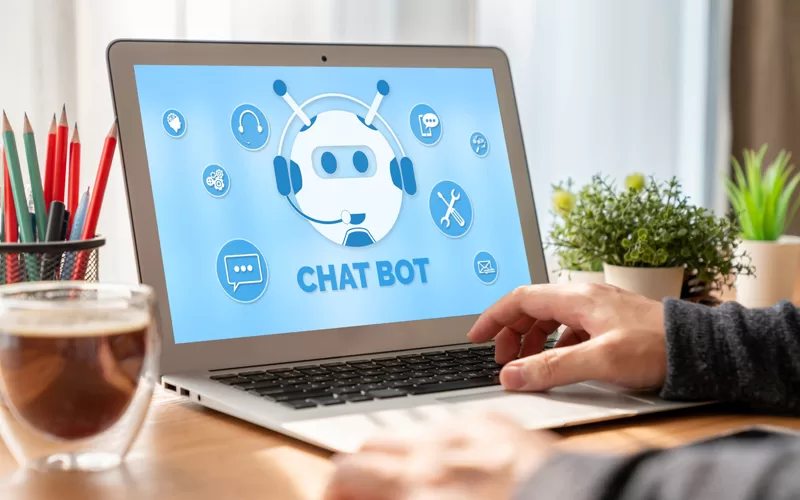
AI (Artificial intelligence) is fascinating, but tech giants like Elon Musk and Bill Gates have spoken about their growing scepticism towards AI. While it is true that AI has helped in the automation of tasks. AI-generated content is assisting people in living their lives through a myriad of means. However, job automation is fueling people’s fear of being replaced with robots in the workplace.
One of these jobs is one of the content marketers or writers who use logic, creativity and research to make content (text) readable to readers. However, due to the introduction of Generative Pre-Trained Transformer Version 3 (GPT-3) and other technologies for automated content writing, AI can produce human-like text at a quicker speed. Therefore, NJ Local SEO companies and content marketing professionals must know how GPT-3’s content generator will influence the SEO and Content Marketing.
The GPT-3 Buzz

If you’re professionally involved in content marketing as a digital marketing agency, writer, or SEO expert, you have heard about the GPT-3 buzz about copywriting in the last few days. Before discussing its effect on SEO and Content Marketing, it is important to look at GPT-3’s content generator more technically.
It was developed by OpenAI, a company based in San Francisco. AI research lab GPT-3 is a deep neural network that can learn by processing the data. It can be used as an autoregressive model of language to be used in natural language processing (NLP) systems. In simpler terms, GPT-3 is an AI-powered trained language model that can automatically create text. It’s not the first in its class since we have Microsoft’s model for language, Turing NLG and NVIDIA’s Megatron and GPT-2 as the primary predecessor of GPT-3.
What is the reason GPT-3 SEO has created so much buzz? It is because the quality of the automated content written by copywriting GPT-3 is so good that it is difficult to differentiate it from writing done by actual writers.
GPT 3- Impact on SEO and Content Marketing

GPT-3’s content generator will automatically create text; however, what does it mean to content marketing? Does it mean that content marketing professionals can reduce costs from an SEO standpoint by using GPT-3’s automated content?
GPT-3 copywriting can’t substitute content focused on quality and reader interaction because GPT-3 needs to improve, i.e. It cannot think or develop creative ideas as a human brain. It is taught by digesting a massive database of language content and creating new, synthesized content, using its ability to anticipate the word that will come by analyzing the words that have been written before. Thus, it can produce relevant content for the theme but may also need to be more interesting.
1. GPT-3 could remove low-quality or cheap-cost content mills:
GPT-3 content will outperform cheap and low-quality content sold by content mills. These contain keywords and are easily readable but do not increase sharing on social media or draw backlinks. When writing low-quality content, GPT-3 is more reliable because it is more likely to contain specific information from trustworthy sources. GPT-3’s content generator is expected to be cheaper soon as well, and when it does, it will force mills of content to shut down the business.
GPT-3 excels in making short-term content and is an excellent tool for tasks such as reframing topics, topic optimization, summarizing, etc. However, with longer-form content, it can lose its method of operation.
2. Will GPT-3 content get ranked?
Utilizing the GPT3 SEO software, SEO practitioners can access vast volumes of articles and blogs while spending much less time and cost. What is the best way to use these content pieces that are automatically generated to implement SEO strategies, or do search engines such as Google change their algorithms to recognize AI-generated content and punish it?
According to an article by Alltech Magazine, Google does not penalize AI-generated content as long as it provides value to users. This means that content created with GPT-3 SEO software has the potential to rank well, following Google’s SEO best practices.
Because it can produce a tremendous amount of blog ads, GPT-3 SEO can become a tool to implement black-hat SEO techniques and, in turn, could cause spamming on the internet in a way that has never been seen before.
The success of Google as a search engine depends on its ability to provide users with valuable information, and it will not sacrifice that. Google has stated that, for their algorithm, the primary factor to be considered when ranking content is the value it brings to the user. It doesn’t matter if AI or a human writes the content; it must be listed when it is flooding the web with outdated and repetitive content.
3. GPT-3 What can content marketers gain from it?
Quality-focused content marketers aren’t looking to saturate the internet with SEO tricks that are a black hat or poor-quality content. They are already aware of this and instead focus on content that could:
- Connect to readers
- Increase brand awareness
- Increase the organic reach of landing pages.
- Increase leads and convert
- Is posted via social media
- Reach out to a broader crowd
Does copywriting in GPT-3 assist content marketers with these goals? GPT-3’s content generator may never be able to create high-quality, conceptually original logic and lengthier articles, but at least at this point. However, its AI offers a variety of features which can enhance a writer’s capabilities by improving the potential of ideas. In particular, the AI could help writers with their opinions by offering suggestions for headlines and production descriptions, CTA buttons, and more.
Content writing is an extremely difficult process, and it’s about more than just writing correctly grammatically constructed sentences. Professional writers must determine what they want to write to improve it, how to make it more exciting and appealing, what to do to be more solution-oriented or fashionable, etc. However, a significant amount of time is used for tasks such as revising the content, optimizing the topic and making SEO Meta descriptions, Google advertisement copy footnotes and author descriptions or product descriptions, etc.
GPT-3 SEO and Content Marketing tools allow for the automation of the writing process to make writing easier for writers and will give the writer more time to concentrate on the aspects of writing that require human creativity and diligence, as well as research and planning.
Conclusion:

FAQs:
1. Who is eligible to use GPT-3?
The company of Elon Musk Open AI released GPT-3 content generator in June 2020. It was initially launched in a beta version with limited. Developers had to sign up for the waitlist for access to its capabilities. A lot of developers around the globe have realized its potential in GPT-3 copywriting, and waiting lists have been emptied. Open AI announced on November 2021 that the technology would be available immediately to developers. There are, however, some requirements to be met. Only certain countries would be granted access to the software. Designers and developers of Cuba, Iran, and Russia need help to gain access to the features of this fully integrated GPT-3 SEO.
2. What exactly is GPT-3 employed for?
GPT-3’s content generator, as its name implies, is used to create real-time automated content which real humans could make. True, creativity is not able to be fed to machines. However, through user-training analysis, The GPT-3 SEO can be incorporated into SEO to optimize search engines. Information about the user is fed into the system to create nearly perfect copies. It has already created poems, articles, news reports, stories, dialogue, and many more.
3. How will it take time to complete GPT-3 training?
Massive machine learning models require enormous computing energy (hundreds of exaflops) and a smaller memory footprint. These models have huge embedding tables. There needs to be more than just one GPU, and it will fail if it is charged with running billions of parameter language models such as BERT and GPT-3. Model parallelism is a technique used to divide the parameters among several GPUs. They are, however, expensive, complicated to employ, and difficult to can be challenging to scale. The time required is 36 years to learn 175 billion parameters for GPT-3 content generators using eight V100 GPUs.
4. What information is used to train to be used in GPT-3?
Regarding 175 billion parameters, GPT-3 SEO is the biggest model for learning language from content. It is trained using more than 45TB of data on text from various datasets. The model is not equipped with data and is not designed to keep data. GPT-3’s primary purpose is to predict the following sentence, and software is the ability to anticipate the following word sequence or corrections.